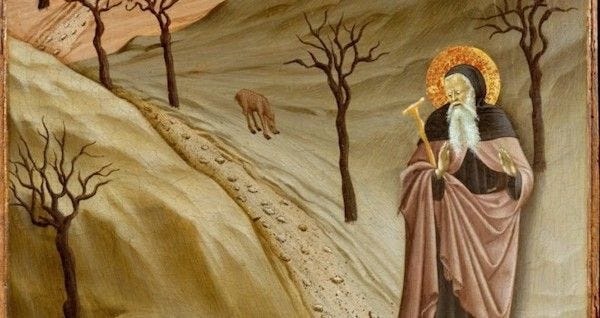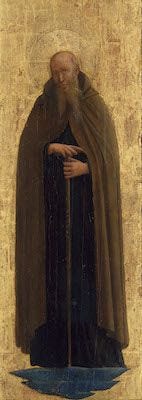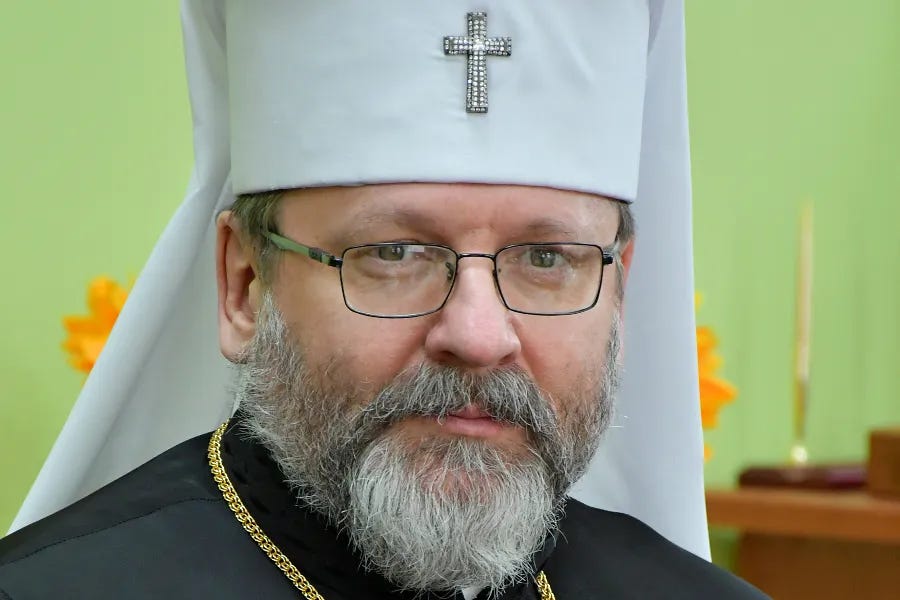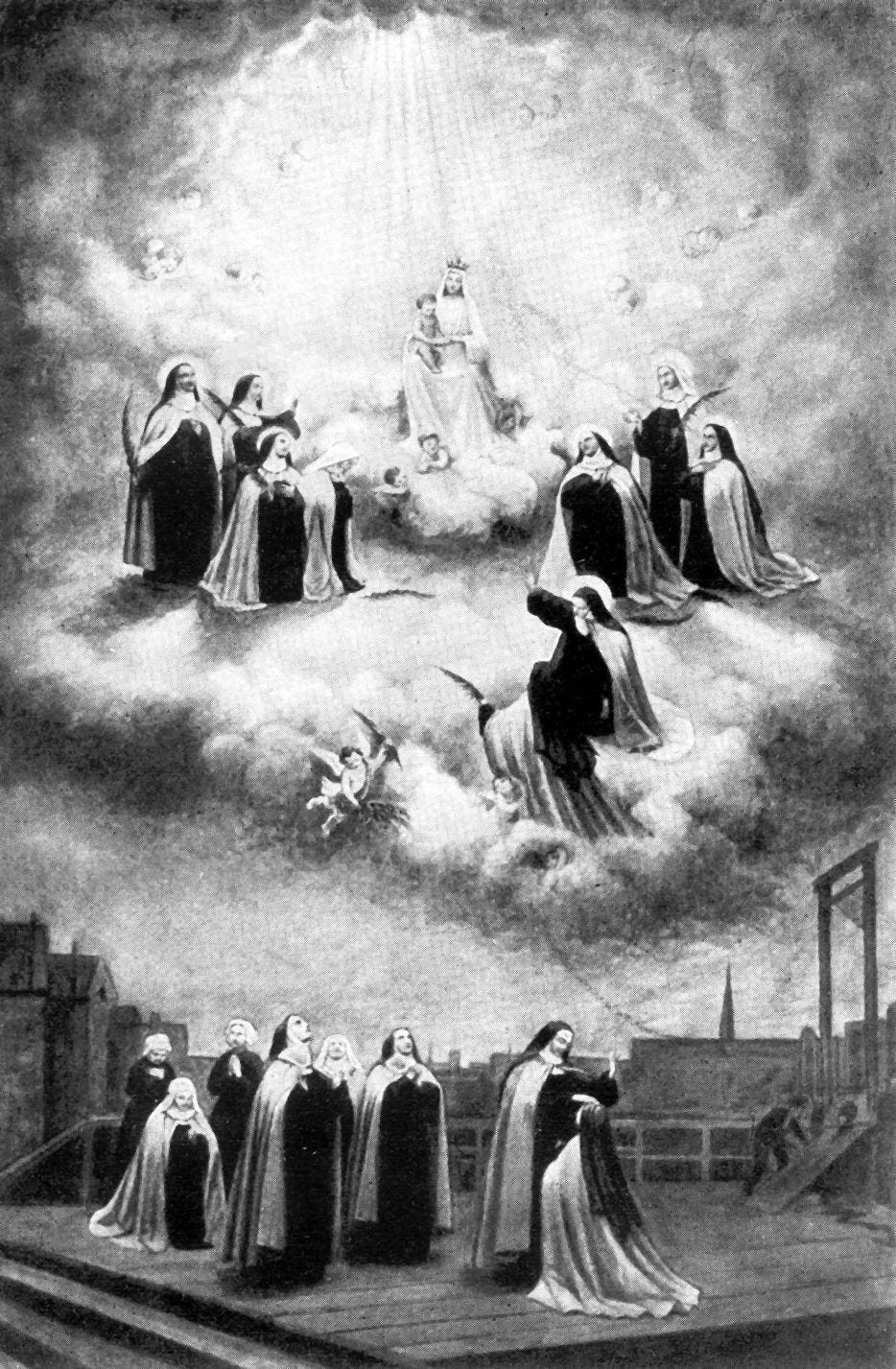
Hey everybody,
Today is the feast of St. Anthony the Great, and you’re reading The Tuesday Pillar Post.
The saint we celebrate today is remembered throughout the Church as the “father of monasticism,” or the “father of all monks,” — and really, he deserves that title.
But Anthony is really the reluctant father of those monks, and that’s worth noting.
Here’s what happened:
Anthony was born in the third century, to a wealthy family of Christians in southern Egypt. When he was 20, his parents died suddenly, leaving Anthony to care for his young sister. But soon after, Anthony was attending the Divine Liturgy, when he heard these words read from the Gospel:
“If you wish to be perfect, go, sell what you have and give to the poor, and you will have treasure in heaven.”
They struck the young man in the heart. He believed they were from the Lord, for him. So he sold or gave away nearly everything he’d inherited from his parents, save for what his sister would need, and he gave the money to the poor.
When next he heard the Gospel read, this was the message: “Do not be anxious about tomorrow.”
Anthony again heard in the Scripture the Lord’s voice. He gave the rest of their stuff away. He got a group of consecrated virgins to agree to take care of his sister. And he left the village, moving into a little cave that once was used as a tomb, doing manual labor to support himself, and modeling his life after an old hermit who lived not far away.
He lived in that cave for 15 years, and spent all of it wrestling with the devil. The temptations Anthony faced might seem familiar: He struggled at first with pride, and with boredom in his desert life, and with lust, most of all. Anthony threw himself into Scripture, prayer and fasting to oppose the temptation. After a long struggle, the devil appeared to him as a child, and Anthony rebuked him.
Anthony spent 15 years living as an ascetic outside his village, and then fled further into the desert, to an abandoned Roman fort, where he lived in prayer for 20 more years, not speaking, and living off bread that people would bring to him. A lot of stuff happened in those 20 years, and people came to know that Anthony was out there in the fort, locked in by himself praying.
By the time Anthony was in his mid-50s, a crowd of young men had gathered around the fort where the hermit lived, all of them hoping to become ascetic hermits too.
And so, according to St. Athanasius, “his acquaintances came and began to cast down and wrench off the door by force.”
They tore down the door. So Anthony came out, and he prayed with those young men, and spoke with them, and taught them something about prayer, and something about fasting, and something about the joy of his own spiritual life.
“And thus it happened in the end that cells arose even in the mountains, and the desert was colonized by monks, who came forth from their own people, and enrolled themselves for the citizenship in the heavens… and by frequent conversation he increased the eagerness of those already monks, stirred up in most of the rest the love of the discipline, and speedily by the attraction of his words cells multiplied, and he directed them all as a father,” Athanasius wrote.
Thus began organized monasticism, say the Fathers of the Church, with Anthony becoming the reluctant father to a crowd of young men in the desert, full of zeal, and eager for a meaningful Christian life. But as for himself, after about five years, Anthony went back into solitude, and lived rather happily as a hermit again, until he died out in the desert at 105. Before he died, Anthony gave away the clothes on his back, and gave instructions that he should be buried in some quiet, unmarked spot.
Anthony taught his monks a lot, including what he had learned about living the Christian life, and about confidence in the power of grace:
We ought to fear God only, and despise the demons, and be in no fear of them. But the more they [tempt us], let us all the more intensify our discipline against them, for a good life and faith in God is a great weapon.
At any rate they fear the fasting, the sleeplessness, the prayers, the meekness, the quietness, the contempt of money and vainglory, the humility, the love of the poor, the alms, the freedom from anger of the ascetics, and, chief of all, they fear piety towards Christ. Wherefore they do all things that they may not have any that trample on them, knowing the grace given to the faithful against them by the Saviour, when He says, ‘Behold I have given to you power to tread upon serpents and scorpions, and upon all the power of the enemy.’
God has given us power to tread upon the enemy. There is power in the cross, and in our embrace of it.
May the Father of All Monks pray for us — and may we too hear God’s voice in the Word.
The News
The Pillar reported on Sunday the murder of Fr. Isaac Achi, who was violently killed by terrorists at his Nigerian parish, Sts. Peter and Paul, early Sunday morning.
Whatever you’ve already heard about the priest’s death, you’ll want to read our report.
Our Nigerian correspondent has a direct account from Fr. Collins Omeh, who is the parochial vicar at the parish, and who is now recovering in the hospital; he suffered multiple gunshot wounds while he narrowly escaped the terrorists in his rectory compound.
"According to Omeh: 'The bandits, who were about 15 in number, came fully armed and shooting sporadically in the air shouting ‘Allahu Akbar’ [God is great].'
The priest said that in the middle of the night, he was confronted at gunpoint in his living quarters inside the rectory compound, and directed to climb through a hole created in the ceiling, and then to take the terrorists to Fr. Achi.
But the men initially had difficulty gaining access to Achi’s quarters, and began shooting their weapons in all directions. Achi was shot in the leg, Omeh said, and the parochial vicar was shot in the hand.
The two priests, held at gunpoint by the terrorists, began praying together, and offered one another the sacrament of confession, Omeh said."
Initial reports said that Fr. Achi was burned to death, when terrorists set fire to his rectory. Fr. Omeh told The Pillar that Achi was first shot in the chest, and his body was then burned when the rectory was set ablaze. In either case, the priest is the latest victim of the Nigerian persecution of Christians that you’ve been reading about for months in The Pillar.
As the country gets closer to its general election next month, some expect the violence against Christians will get more intense. Our coverage will keep you informed, so that you can continue to pray for the people of Nigeria.
In fact, here’s a story we published on Friday, about another casualty of Christian persecution in Nigeria: St. Peter’s Minor Seminary, which caught fire last Tuesday, and has been completely destroyed.
At first, we suspected the fire was set by terrorists. But we talked with the seminary’s rector and he told us that wasn’t the case. Still, the fire is connected to terrorism:
The seminary’s rector explained that the building has been closed for two years, with seminarians sent elsewhere, because of the violence in the region surrounding it.
During those two years, the fire extinguishers in the building were stolen, and the tall grass around the building — usually cut back by students — had grown unabated. So it seems that sparks from a small grass fire hopped into the building, and as the blaze spread, security guards had no way to put it out. The damage was total.
As for Fr. Achi, the priest is being acclaimed across Nigeria as a martyr of the faith.
Of course, that’s for the Church to decide. But in the meantime, may his name be remembered in the Holy Sacrifice of the Mass, at altars around the world.
—
The explosive liturgy war roiling the Syro-Malabar Eastern Catholic Church is still at a stalemate, despite a six-day meeting convened in India last week which aimed to resolve the conflict.
The Church’s Synod of Bishops — the Syro-Malabar’s legislative body — was unable to reach “a decision acceptable to all,” Cardinal George Alencherry announced Jan. 14, leaving the Church’s bishops, prests, and laity divided over whether to follow the Vatican’s liturgical norms for the Holy Qurbana, the Eucharistic liturgy of the Syro-Malabar Church.
The situation has become effectively deadlocked — and Rome has already done a lot: issuing norms, replacing bishops, ordering priests to observe its norms, etc. But Rome is pretty far from the Ernakulam-Angamaly archdiocese, the center of the conflict. And the protestors — those in the street, and those storming Church sanctuaries — are very close.
So how will this play out? Will the conflict wear itself out? Will police continue locking up Syro-Malabar churches to stop the riots? Will the pope make a more direct intervention, or summon the entire hierarchy to Rome?
Something’s gotta give.
In the meantime, you can read the latest right here. This is a sad situation, and a look into challenges with both big differences - and some interesting parallels - to the trials of the Church in the West.
Start your day with Starting Seven - a daily news roundup in your inbox.
—
In Rome, the ongoing Vatican criminal finance trial became a bit of a soap opera last week, with testimony on Friday including lurid allegations of attempted murder, sworn vendettas, and a surprise monologue from Pillar reader Cardinal Angelo Becciu, in which the cardinal read aloud from emails in which he accused the pope of meddling in the case – and in which the pope, according to Becciu, apologized for offending him.
Of course the trial is strange because amid all that soap opera, there was also the dry work of interrogating witnesses about the actual details of the Vatican’s bad London property investment, and the decisions surrounding it.
In The Pillar’s newsroom, where we’ve been invested for years in combing through financial records to uncover this scandal, in depth, we think it’s important to cover that dry financial testimony, as a matter of public record, even on days when not very much new is emerging.
At the same time, we know that many of you want to Watch What Happens™ — you want us to spill the tea on the gossip and accusations flying around the courtroom.
So yesterday, Ed and I constructed some Choose-your-own-Vatican-Adventure coverage, just for you.
It’s reader’s choice day. That’s just how much we love you at The Pillar.
📰
—
In Knoxville, Tennessee, both Bishop Rick Stika and many local Catholics are awaiting some result from a November apostolic visitation to the diocese ordered by the Vatican, to look into criticisms of Stika’s leadership, including the bishop’s admission to The Pillar that he fired an investigator looking into charges that a favored seminarian committed sexual assault.
But things in Knoxville are getting tense. The local Knoxville News-Sentinel has been on the story lately, confirming independently some of The Pillar’s reporting on all of this. And despite the controversy, Stika gave last week an invocation at the state Senate in Nashville, prompting a lot of pushback in his office and at the office of the state’s lieutenant governor.
With all the controversy, the lieutenant governor’s office defended its invitation to Stika.
A spokesman told us that the bishop has been “a pillar of the Knoxville community and a respected Catholic priest for many years.”
I’m not given to this kind of speculation, but, yes, I’m hoping that spox was being a bit clever in his word choice.
Anyway, here’s the latest from Tennessee.
Álvarez is not easily intimidated. But with the bishop about to stand trial for “conspiracy against national integrity,” most of Nicaragua’s bishops have been pretty quiet about the plight of their confere, and the bishops’ conference has issued no statement at all.
The situation has some human rights activists calling for the bishops to speak out. But in analysis today, our Latin American correspondent Edgar Beltran asked whether an effort to intimidate the bishops actually worked, or whether there is more going on behind the scenes.
You can check out Edgar’s read of the situation - well-sourced and well-considered - right here.
📰
‘This spark of hope’
Here’s a story I really want you to read. It’s a good one, and important.
It’s the story of Vagabond Missions, a ministry and evangelization organization committed to meeting kids often underserved by the Church, who live on the kind of “peripheries” Pope Francis so often talks about.
Vagabond forms missionaries to work in America’s urban neighborhoods, to meet teenagers at basketball games or sidewalk barbecues, and to invite them to get to know Jesus Christ.
It aims to work with parishes, but to do the kind of neighborhood relationship building that few urban parishes are really getting done.
And in 16 years, Vagabond has seen nearly 200 kids become Catholic, and hundreds more find their lives transformed by God’s grace.
Of course, their work isn’t always easy, and some of it requires real discernment about how evangelization actually should work.
But in eight cities across the country, missionaries are doing that work, in close engagement with ecclesiastical leaders, to proclaim new life in Jesus Christ.
Michelle La Rosa has talked about Vagabond with its founders, its missionaries, its board members — and with young people who found life in Christ through Vagabond’s work.
It’s a story worth reading — about a group of missionaries, and about the real, sneakers-on-the-ground work of proclaiming the Gospel.
Don’t miss it. Really. If you want a good news story with teeth, this is the one.
The blubber bomb
I read in the news yesterday that a 40-foot sperm whale washed ashore in Oregon on Saturday; the whale died after it collided with a ship.
That’s sad for the whale, of course, and I want to express the requisite and expected regret about such things.
But the silver lining is that I get to tell you, dear readers, one of my very favorite stories about American can-do ingenuity. And whales.
The year was 1970. In November of that year, a dead sperm whale washed ashore on the beach at Florence, Oregon. The whale was 45-feet long, and it weighed roughly 16,000 pounds.
It sat in the surf, sand, and sun for a couple of days, and, as you’d expect, it started to stink. It was, after all, a dead and bloated whale carcass.
Well, in 1970, Oregon’s beaches fell under the jurisdiction of the state’s Highway Division. There aren’t many marine biologists working in the highway patrol. But there are a few folks who like to blow stuff up.
So a highway engineer, George Thornton, decided that it would be a good idea to blow the whale up. To dynamite it. The thinking was that if the highway patrol could explode the whale into very small pieces, seagulls would come and eat those pieces, and some would wash into the sea, and sharks would do their work, and that would be the end of the whale.
Thornton decided that a half ton of dynamite — 1,000 pounds of the stuff — would do the trick.
As it happens, a businessman who did explosives work during World War II heard about the plan - everyone in Florence, Oregon heard about the plan - and he had some concern. He thought it was too much dynamite, or not enough. Less dynamite, he thought, would push most of the whale into the sea. More dynamite would reduce it to a cloud of sinewy vapor.
The businessman, Walt Umenhofer, tried to warn George Thornton, but he was waved off. Thornton knew what he was doing.
So Walt Umenhofer parked his new car, an Oldsmobile 88, about a quarter-mile away to watch the explosion.
What happened next is the stuff of legends.
It was too much dynamite. Or too little. But when that whale exploded on Nov. 12, 1970, it blew up in pretty good chunks. Whale gristle rained down on people watching from the nearby sand dunes, but big chunks started falling too. Chunks that weighed as much as a man, in some cases.
And the blast radius was pretty big. In fact, according to local reports, Walt Umenhofer’s new car, parked a quarter-mile away, was totaled, when a very large chunk of blubber landed on the roof.
I know what you’re thinking. This sounds like a whale of a tale.
Well, guys, don’t take my word for any of this.
Watch the report right here:
By the way, remember the idea that the seagulls would eat the chunks? They didn’t. The blast scared them off. Cleaning up all that blubber took Florence, Oregon a couple of days, and a lot of elbow grease.
Really, what more can I say?
Be assured of our prayers. And please pray for us. We need it.
(And if you liked this newsletter, guys, do me a favor and share it with somebody else. Thank you.)
In Christ, and the intercession of St. Anthony,
JD Flynn
editor-in-chief
The Pillar





